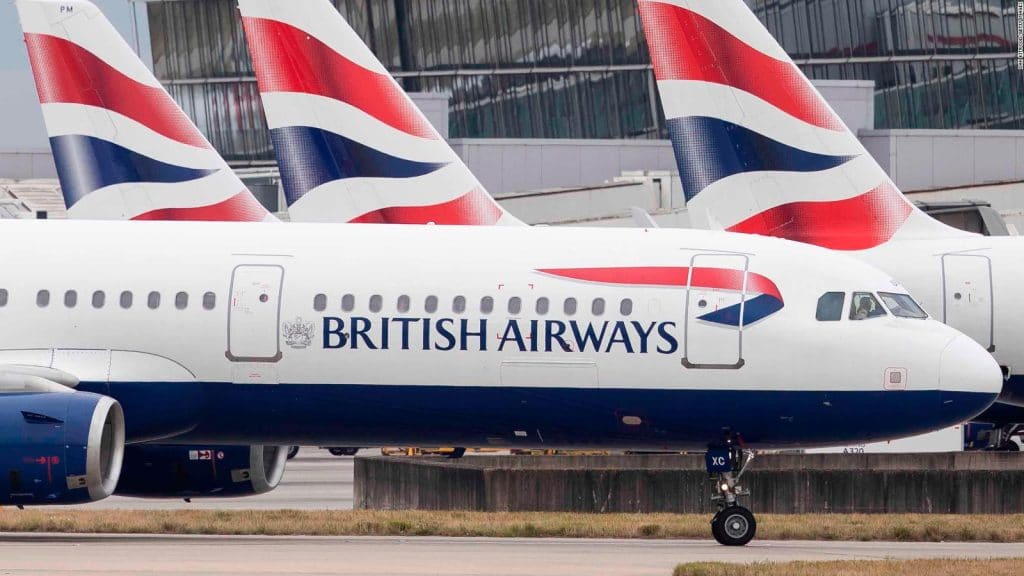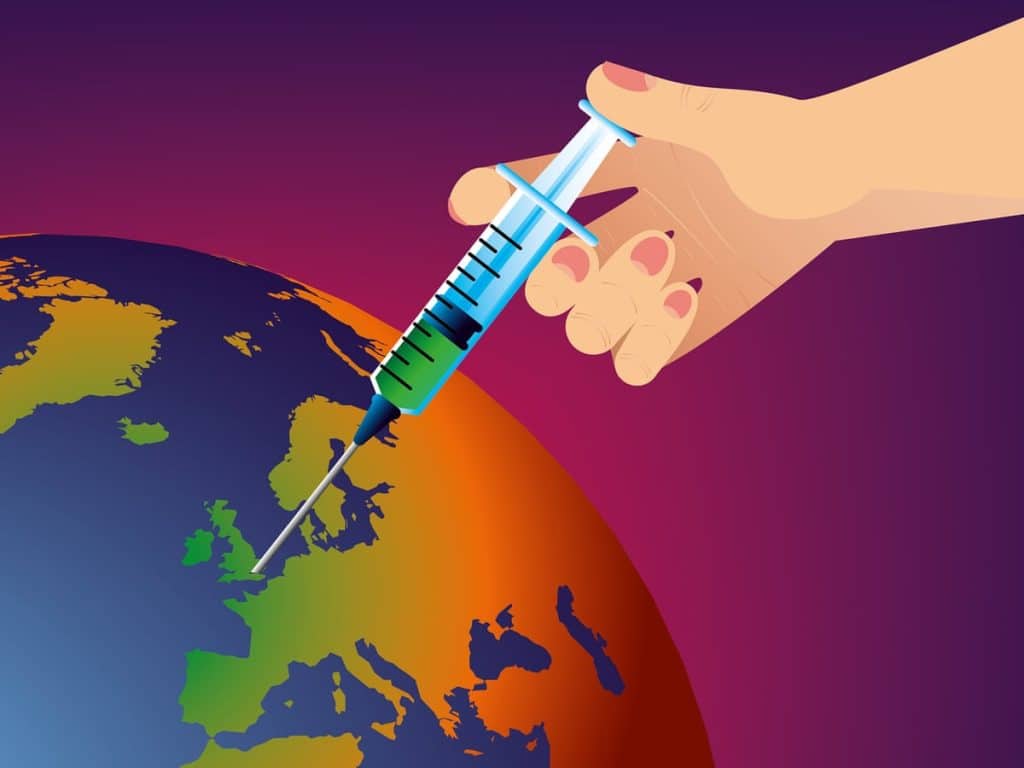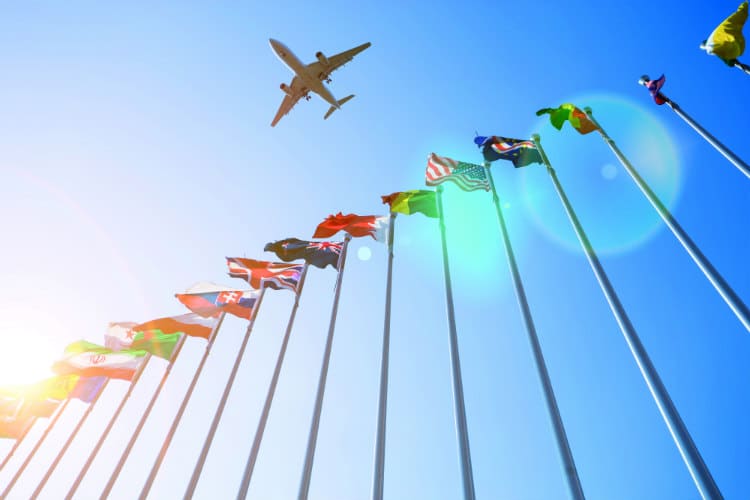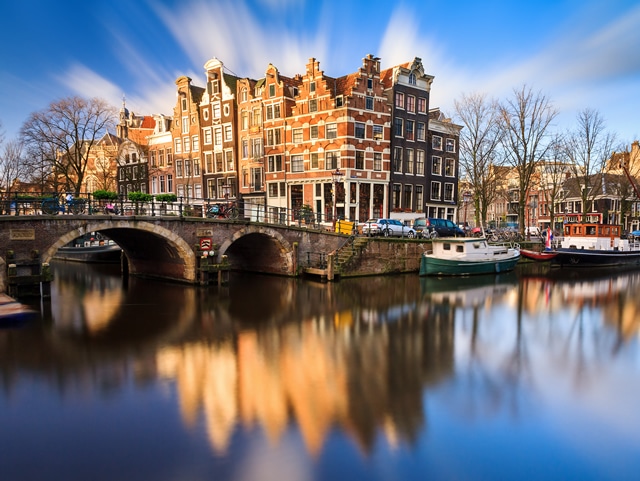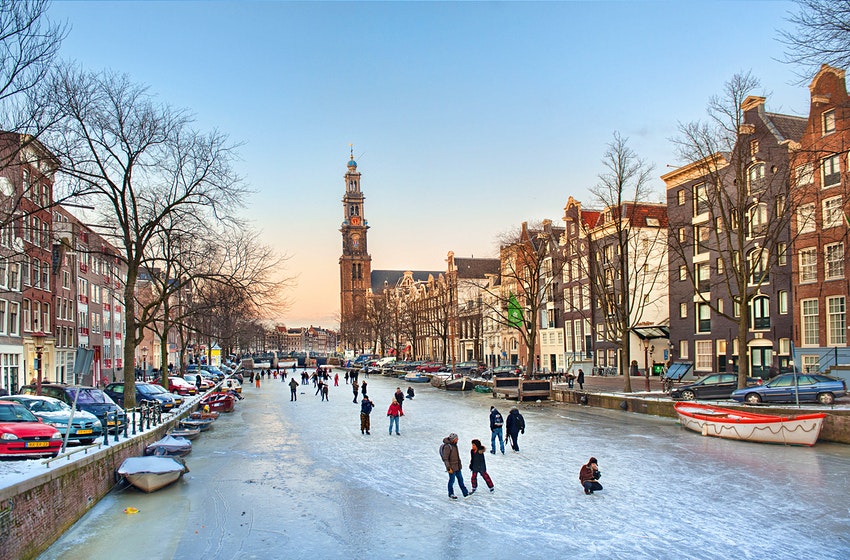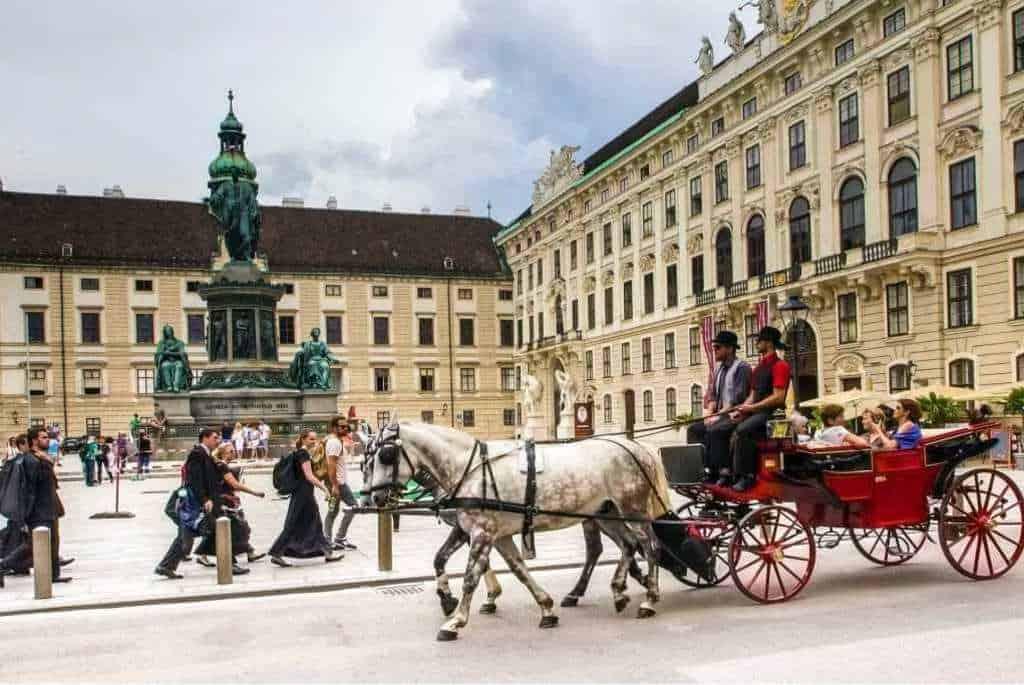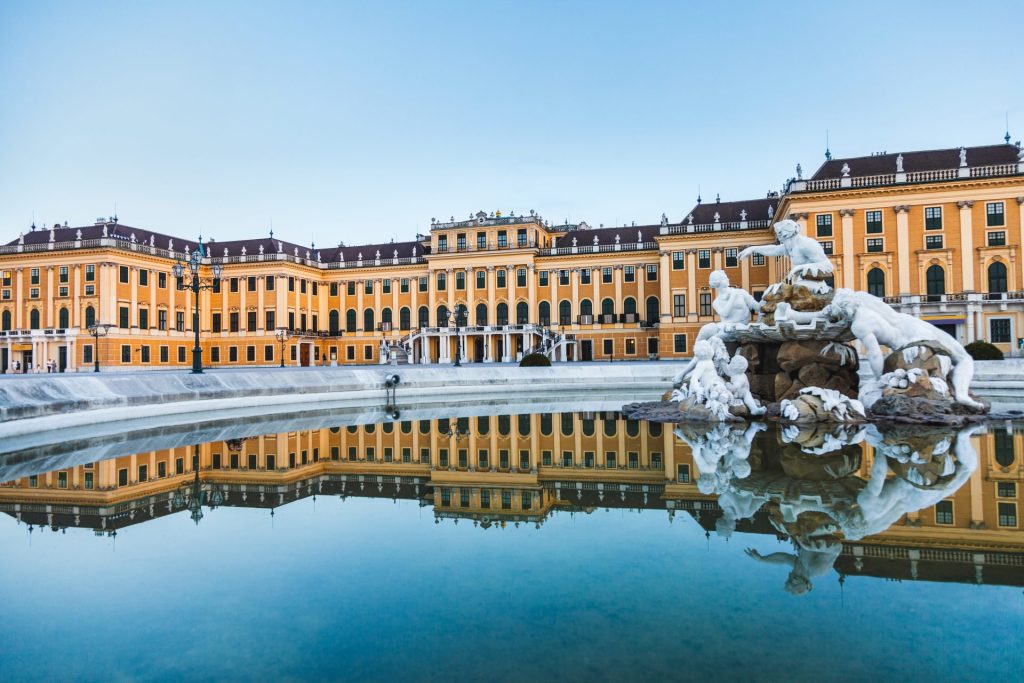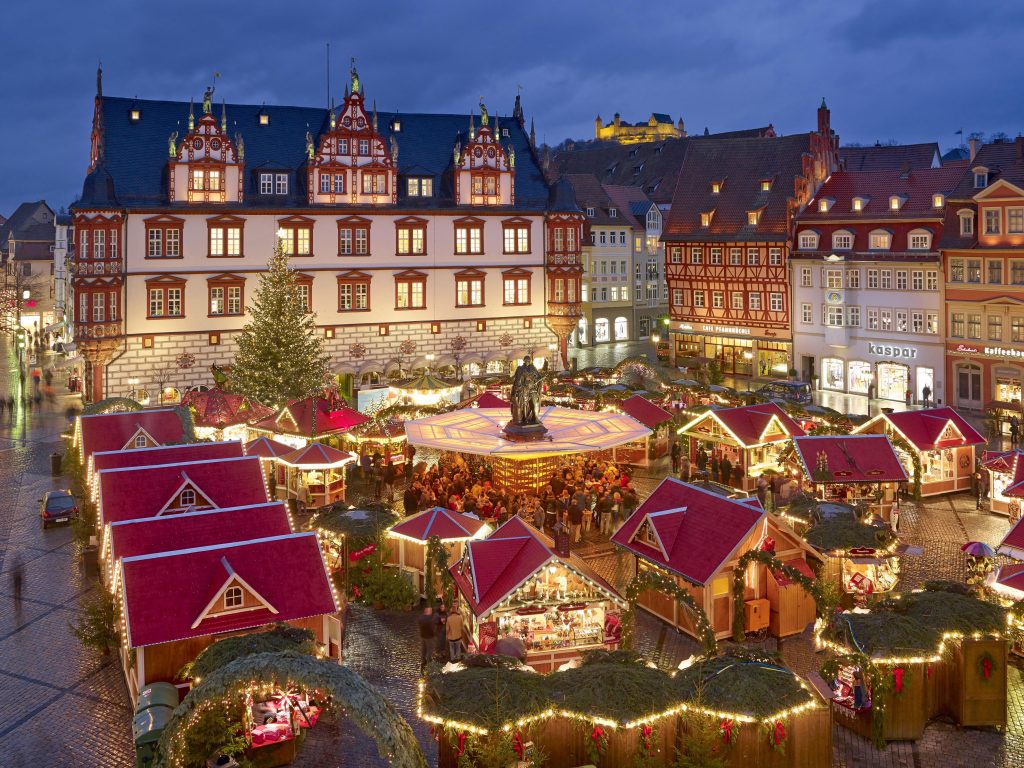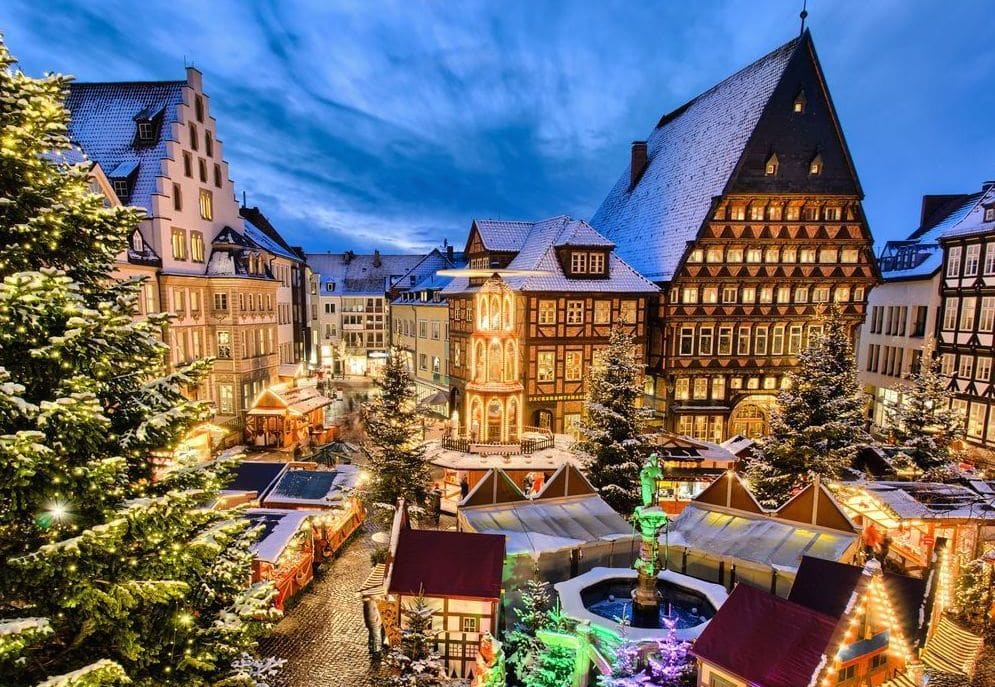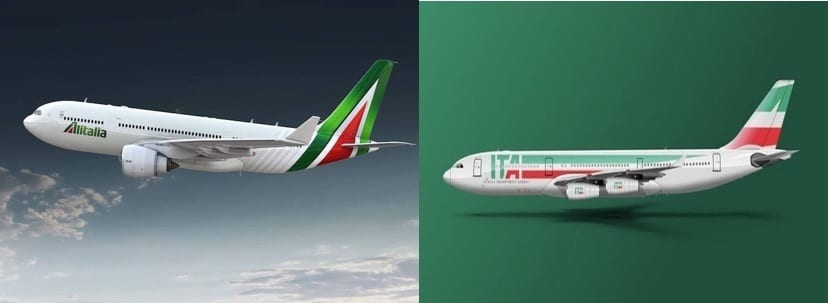
Did you Know Who is the Biggest Flower Exporter in the World?
The NETHERLANDS: The Dutch auctions provide about 60% of all global floriculture trading volume, while the Netherlands itself is the world’s largest flower exporter by value, accounting for about 34% of the world’s total flower exports every year.
The Netherlands is called the LAND OF FLOWERS.
Where is the Flower Capital of the World?
The town is sometimes referred to as the flower capital of the world, as the largest flower auction in the world is based in AALSMEER, the Netherlands.The NEW CENTERS OF PRODUCTION are typically developing countries like ECUADOR (The Biggest producer and export of roses worldwide), COLOMBIA (second largest exporter in the world and with a market of more than 40 years old), ETHIOPIA, KENYA, and INDIA.
Did you know that a garden is considered incomplete without a ROSE plant, which is sometimes called the “QUEEN OF FLOWERS”
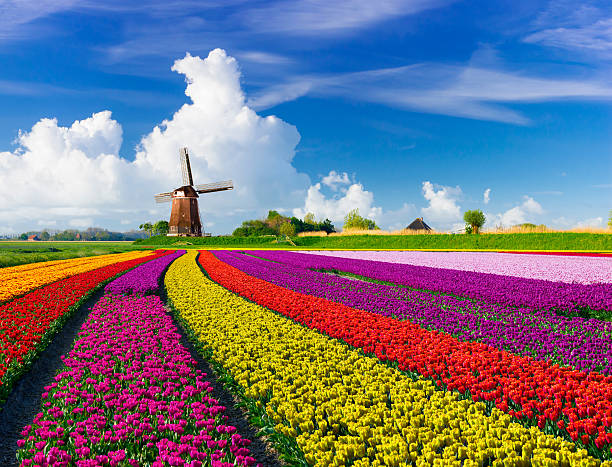

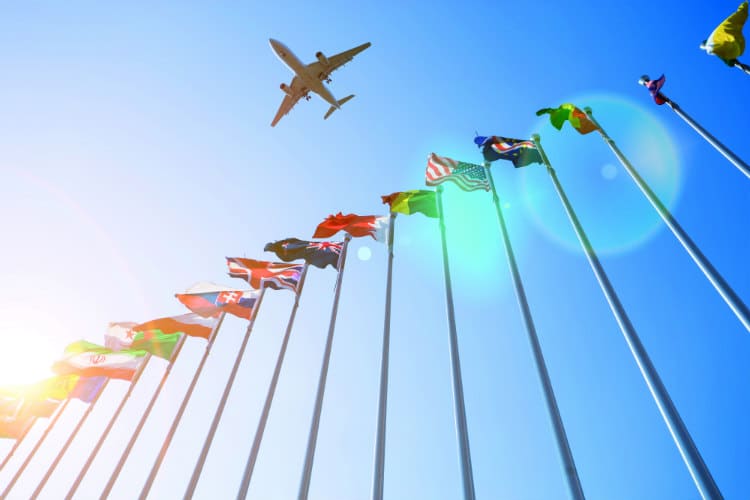
TRAVEL NEWS FROM AROUND THE WORLD
BA THREATENS TO CUT HEATHROW FLIGHTS OVER AIRPORT FEE ROW
Airport plans massive 76% fee increase. “Hiking charges will not help. It will not attract demand – it will have the opposite effect. If the rise in landing charges goes ahead, I know IAG will not be alone in reconsidering our airlines’ use of Heathrow.” The Civil Aviation Authority (CAA) plans to allow the airport to lift the normal cap on the airport’s average charge per passenger by up to 76%.
TRAVEL COVID TESTS COULD BE SCRAPPED BY EARLY 2022
Policy up for review in January. Hoping the aviation industry will ‘bounce back’ in the coming months, he told industry leaders the testing policy will be reviewed in early January. “We’re going to review the policy. We’ll be looking to see what we can do at that stage,” he said at the Airlines 2021 conference. The government has reportedly formulated a Covid exit plan to end self-isolation and testing by next spring. Dubbed Operation Rampdown, it is part of an extensive review of the current ‘test, trace and isolate’ policy by the Health Security Agency. The 160-page leaked dossier looks at scrapping self-isolation and ass testing as Covid will be ‘endemic’ for years, health experts say. These protocols will be rolled back by next April, according to a government source.
Link: https://www.travelmole.com/news/destination/government-reportedly-reviewing-covid-exit-strategy/
REFUND CREDIT NOTES (RCNS): BRITISH HOLIDAYMAKERS URGED TO ‘USE IT OR LOSE IT
Still £132 million worth of unused vouchers
TRADE GROUPS CALL FOR EU TRAVEL POLICY ALIGNMENT
Governments must coordinate their responses. Travel industry groups across Europe are urging member states to align and coordinate in their responses to the current Covid situation sweeping across Europe. A broad group of travel and tourism stakeholders called on governments to better coordinate and their heath and travel policy responses to avoid re-imposing restrictions. It cites the European Centre for Disease Prevention and Control (ECDC), which states that in the current situation, travel restrictions are ineffective in reducing virus transmission, hospitalisations, or deaths. They claim limiting border crossings would indeed not carry any public health benefit.
Up to 900,000 jobs could be lost across the EU’s tourism sector this year if travel restrictions are re-imposed this winter, citing WTTC data. It says European tourism cannot function with ‘inconsistent and constantly changing national approaches.’
“Coordination is the only solution to protect the sector from the effects of prolonged uncertainty in Europe.”
The lobby groups are calling for a number of measures including move towards an individual risk-based approach, rather than the current country-to-country approach. Member states should urgently adopt a common and fully aligned approach on the eligibility as well as timing of booster doses.
The groups, made up of Airlines for Europe, CLIA, WTTC, European Travel Commission and others, also want national governments to support the full digitalisation of the verification process by providing a simple ‘okay to travel’ message as part of the online check-in process.
www.travelmole.com/news
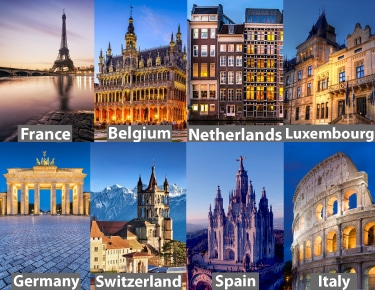
HOLLAND
Partial lockdown in the Netherlands is set to last three weeks. Restaurants, bars and essential shops must by 8 pm and non-essential stores and other services by 6 pm. A second night of protests took place in The Hague at the weekend. There were protests in Belgium with police firing tear gas and water cannon at crowds, while an estimated 40,000 people took to the streets of Vienna to protest.
AUSTRIA
A nationwide partial lockdown commences in Austria on Monday. Austria upped the ante and has imposed a full national Covid-19 lockdown starting on Monday. It comes days after the government decided to lockdown only the unvaccinated. It is extended to a full national lockdown for up to 20 days. Additionally, everyone must get vaccinated by 1 February 2022, Chancellor Alexander Schallenberg said. Austria has record infections and one of the lowest vaccination rates in Western Europe. People are asked to work from home, and on-essential stores will close.
GERMANY
CHRISTMAS MARKETS SCRAPPED IN GERMANY . German states Bavaria and Saxony are cancelling all Christmas markets due to of surging Covid infections. “The situation is very, very serious and difficult,” Bavaria Premier Markus Soder said. Restrictions will amount to a ‘de facto lockdown ‘for unvaccinated people. He also called for mandatory vaccinations. The state of Saxony also announced public restrictions to start Monday the closure of Christmas markets. It includes one of Germany’s largest festive markets in Dresden. Link: https://www.travelmole.com/news/destination/christmas-markets-scrapped-in-germany/
CROATIA, ITALY, SWITZERLAND, IRELAND, GUADELOUPE
Thousands protested in Zagreb, Croatia over the mandatory use of Covid passports to enter public buildings. Violent protests in Milan and Rome saw clashes with police for the same reason. other demonstrations occurred in Switzerland, Northern Ireland and even the French Caribbean territory of Guadeloupe.
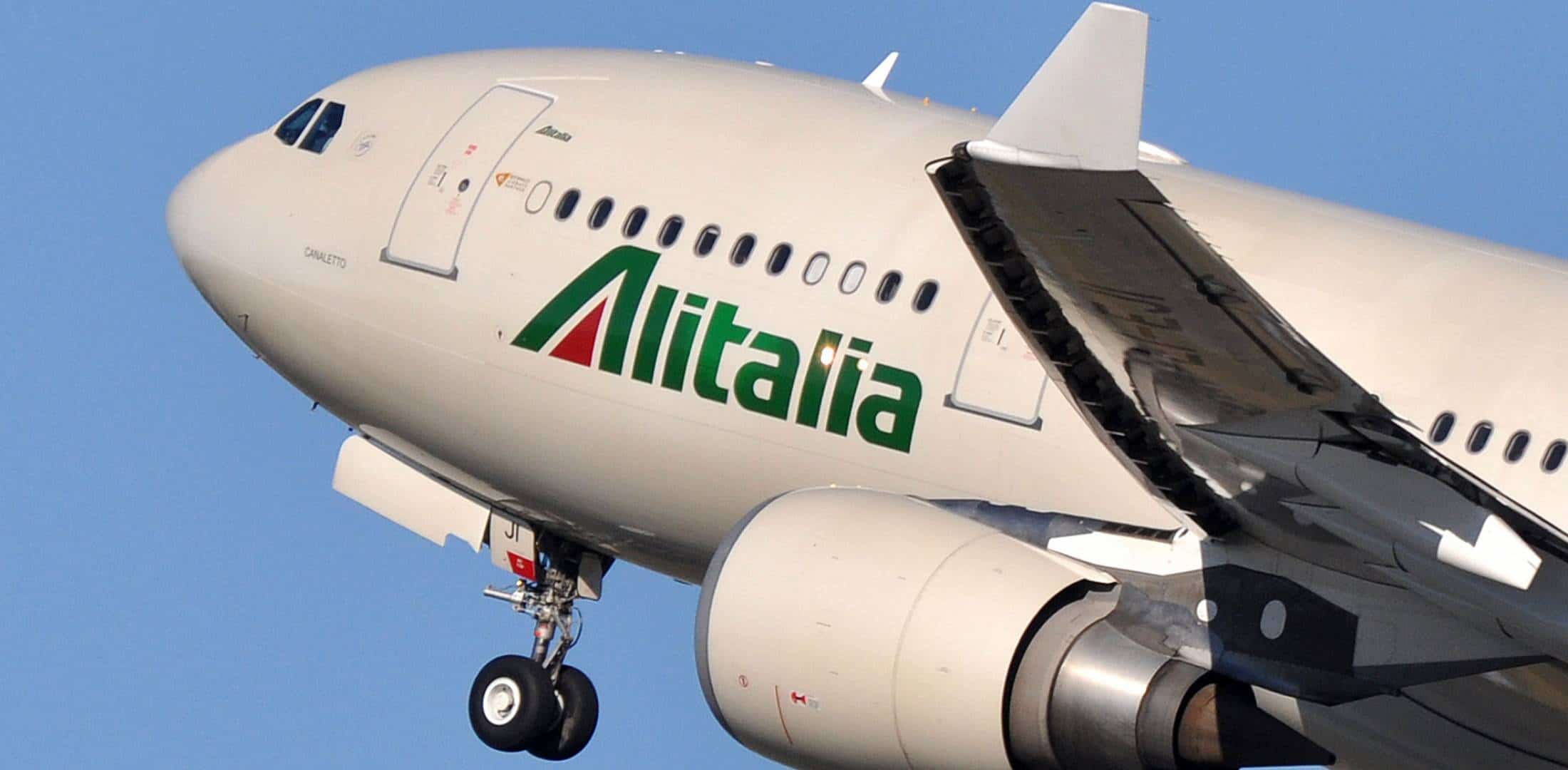
Following Alitalia’s cease of operations on October 15, Italia Trasporto Aereo (ITA) will replace the state-owned airline and will start flying from that date. As reported by Reuters, Italy reached a deal with the European Commission after months of haggling over the fate of the failing airline. ITA was originally intended to begin operations as soon as April 2021.
A key portion of the negotiation was focused on ensuring ITA was independent of Alitalia, so that it was not liable for paying back billions of euros the old carrier had received in state aid. The new airline said in a statement it will aim to raise initial capital of roughly $826 million in order to buy assets from the old company and begin operating.
Another result of the negotiations is that ITA will inherit only part of Alitalia’s flight slots, which are a major asset and proved a major sticking point in the talks. Specifically, the airline will receive 85 percent of the Alitalia slots at Milan Linate Airport and 43 percent at Rome–Fiumicino International Airport.
ITA will initially operate a fleet of 52 aircraft, seven of which are wide-body and used for longer-haul routes. The number is expected to increase to 105 aircraft (including 23 wide-body) by 2025. Eighty-one of these aircraft will be new generation, having replaced the older technology.
At the start of operations, the airline will serve 45 destinations with 61 routes, which will rise to 74 destinations and 89 routes in 2025. In the winter 2021 season, ITA will operate routes to New York (from Rome and Milan), Tokyo, Boston and Miami (all three from Rome). In summer 2022, the company plans to launch new flights to Washington, D.C., Los Angeles, São Paulo and Buenos Aires. Short and medium-haul flights will include those to Paris, London, Athens, Madrid, Amsterdam, Brussels, Frankfurt and Geneva, along with Tel Aviv, Cairo, Tunis and Algiers.
Of the 11,000 Alitalia staff, between 2,750 and 2,950 will be employed in the ITA’s aviation unit this year, rising to 5,550-5,700 by 2025.
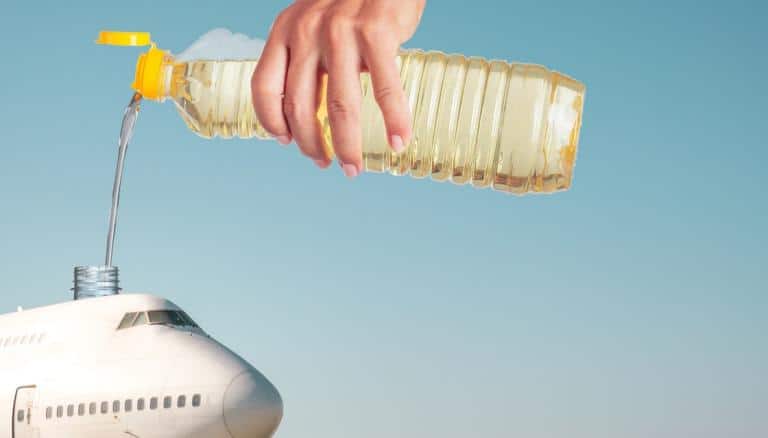
Air France #AF342 A350-900 is partially using used cooking oil as fuel from Paris to Montreal.At 3:40 p.m. today (18 May 2021), Air France Flight 342 took off from Paris-Charles de Gaulle airport’s Terminal 2E for Montreal with its tanks filled for the first time with sustainable aviation fuel produced in Total’s French plants.Sustainable aviation fuel (SAF) is a blend of conventional aviation fuel (JET-A1) and biojet fuel made from waste and residue sourced from the circular economy (animal fat, used cooking oil, etc.).The biofuel used for this flight was made from waste and residue sourced from the circular economy. Total produced the SAF from used cooking oil at its La Mède biorefinery in southern France and at its Oudalle factory near Le Havre, without using any virgin plant-based oil.
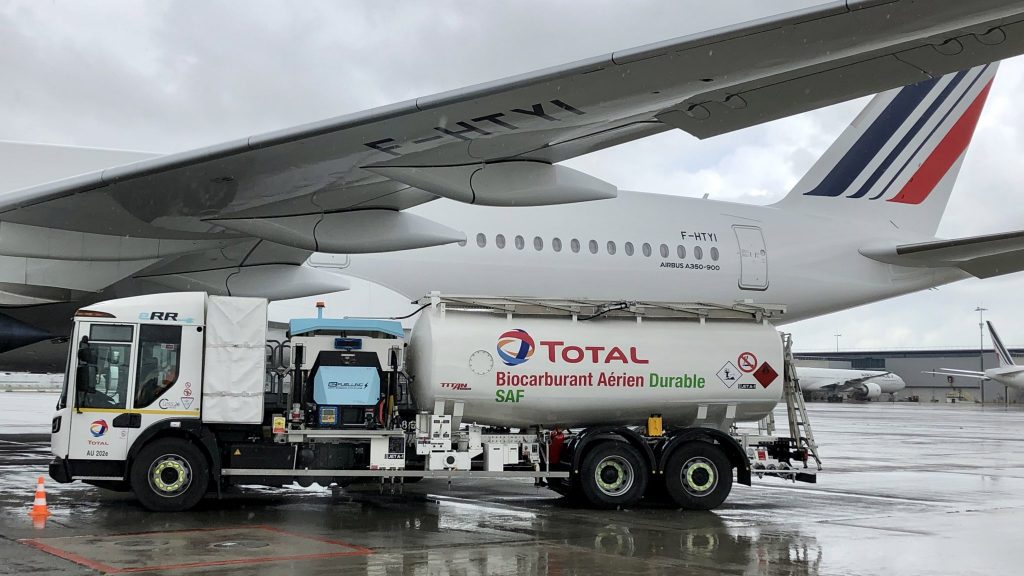
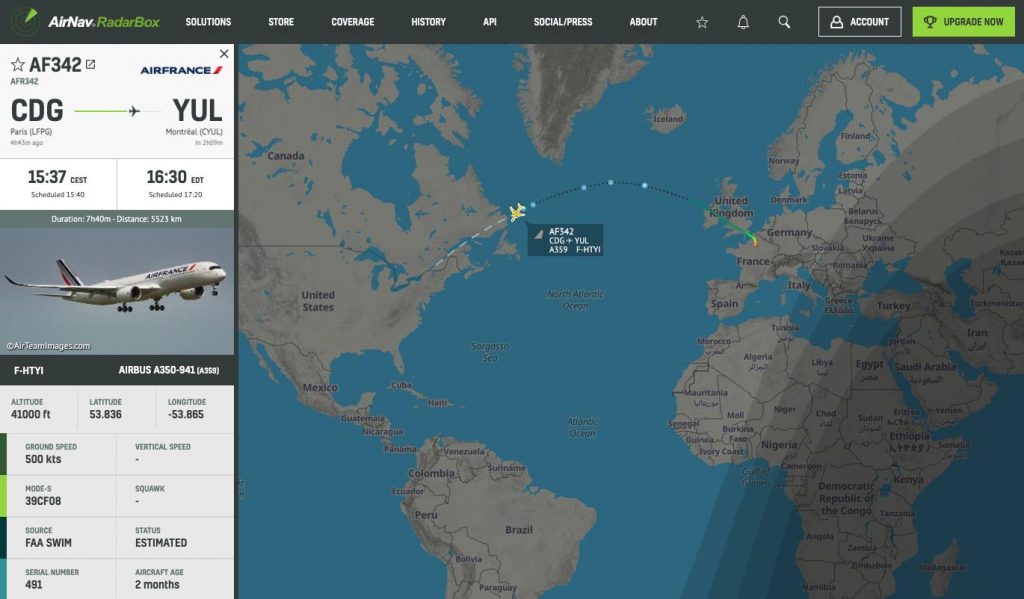
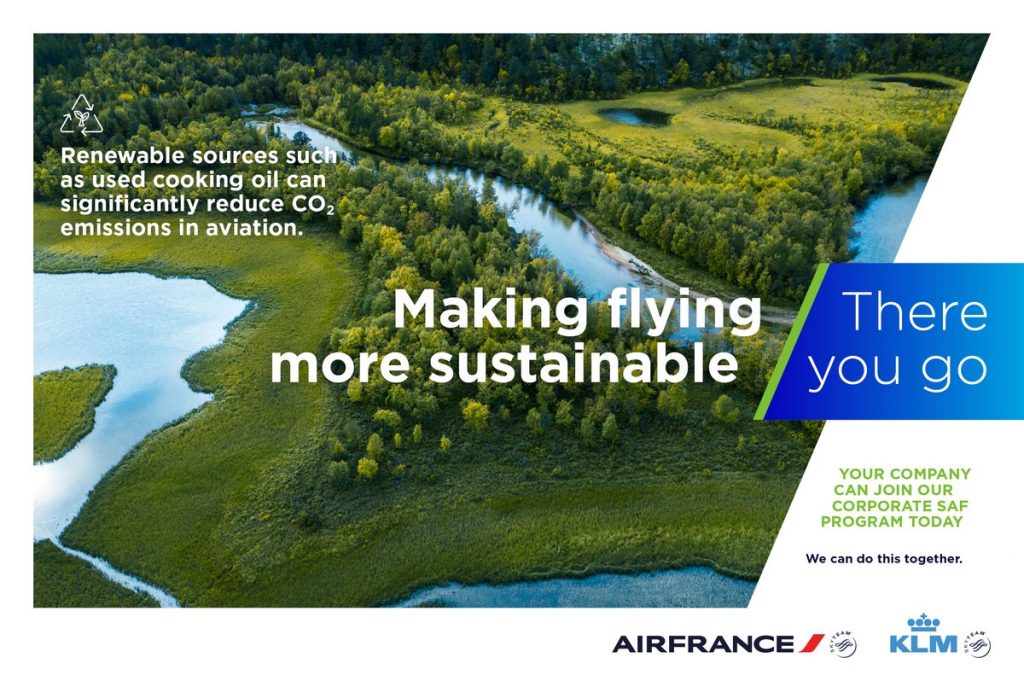
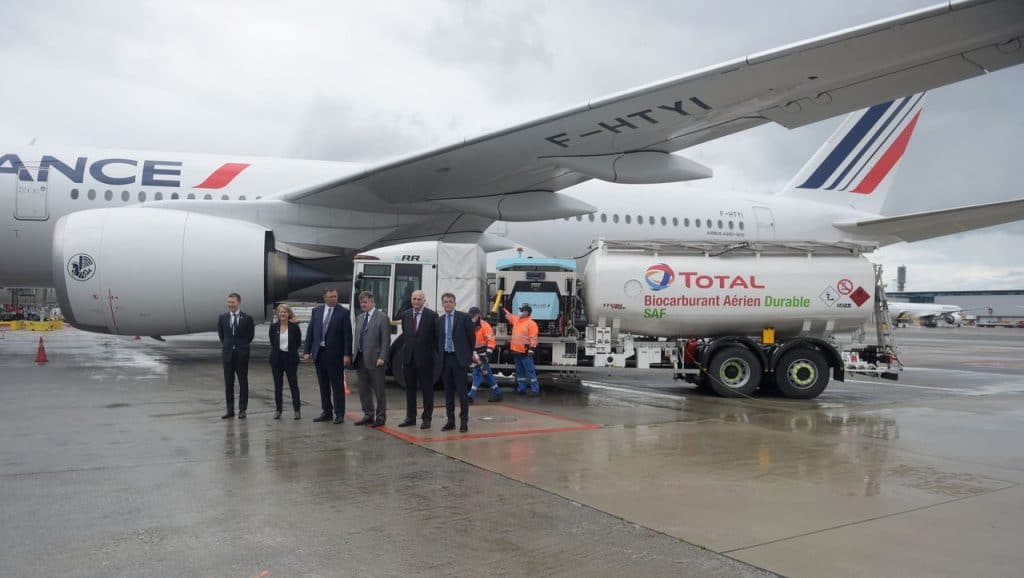
(From LtoR) Air France-KLM Chief Executive Officer Benjamin Smith, Air France CEO Anne Rigail,Total Chief Executive Officer Patrick Pouyanne, French Group ADP (Aeroports de Paris) Chief Executive Officer Augustin de Romanet, Total Aviation head Paul Mannes and Paris-Charles-de-Gaulle airport head Marc Houalla pose at Roissy airport on May 18, 2021, prior to the take off of the first Air France jet long-haul aircraft fueled with sustainable aviation fuel (SAF) produced by French energy group Total. (Photo by Eric PIERMONT / AFP)
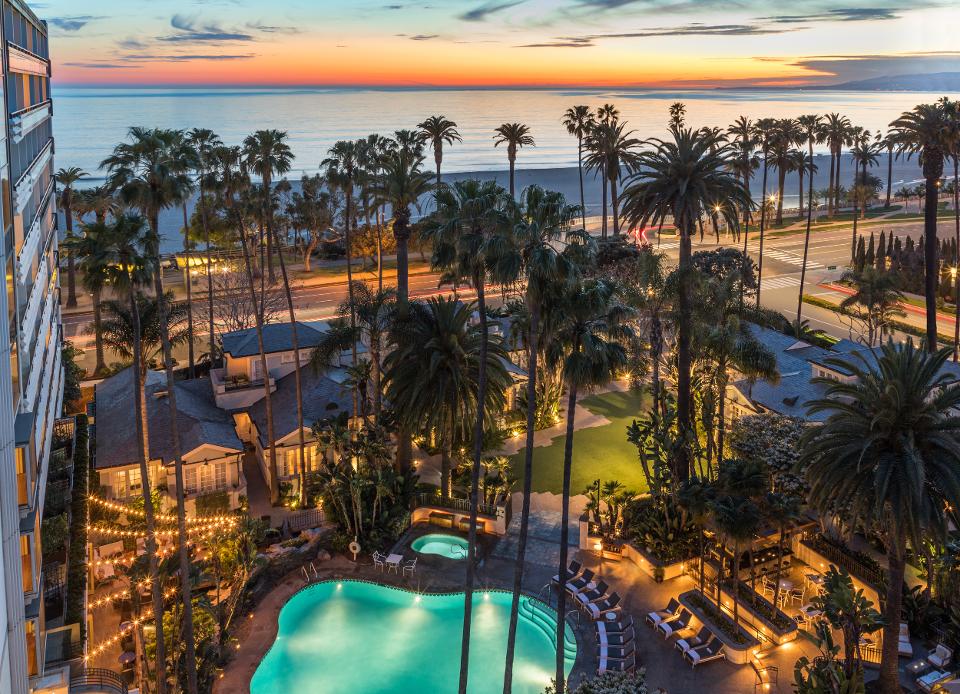
The legalization of marijuana in many states is becoming an increasingly perplexing challenge for one key part of the travel industry: hotels.
They’re confronted with figuring out how to let guests partake in it on-property, training and drug testing employees, and dealing with confusing and ever-changing laws. In short, hotels have much to figure out.
“This is an emerging trend that’s not going away,” said Michael Blank, principal of Woodmont Lodging. “In many ways, it’s akin to the casinos when they were trying to make their push nationally.”
Marijuana is now legal for medical use in 33 states. It is legal in 11 states for both medical and recreational use for adults over 21. Illinois became the 11th state to legalize recreational marijuana as of Jan. 1.
Yet under federal law, it’s still a drug listed on Schedule 1 of the Controlled Substances Act, which makes it a federal crime to own, sell, or possess it. Other drugs listed on Schedule 1 include heroin, LSD, peyote, and ecstasy.
Under President Barack Obama’s administration, then-Deputy Attorney General Jim Cole issued a directive to federal prosecutors in 2013 that effectively told them not to interfere with marijuana-friendly state laws. Former Attorney General Jeff Sessions under President Donald Trump attempted to reverse that decision before his ouster in November 2018.
Link: https://skift.com/2020/01/28/hotels-are-confused-by-rise-of-legal-marijuana-opportunity-or-liability/?utm_campaign=Corporate%20Travel%20Innovation%20Report&utm_source=hs_email&utm_medium=email&utm_content=82621518&_hsenc=p2ANqtz–vj3vV_IljR6GcWEdWfEO9OIYHkWhg3qmiEnss4sXskV3iMF5gQUh1_au-bUASjz1_LWEPcFCpZy18EZD6aW1Kog9CCA&_hsmi=82621518
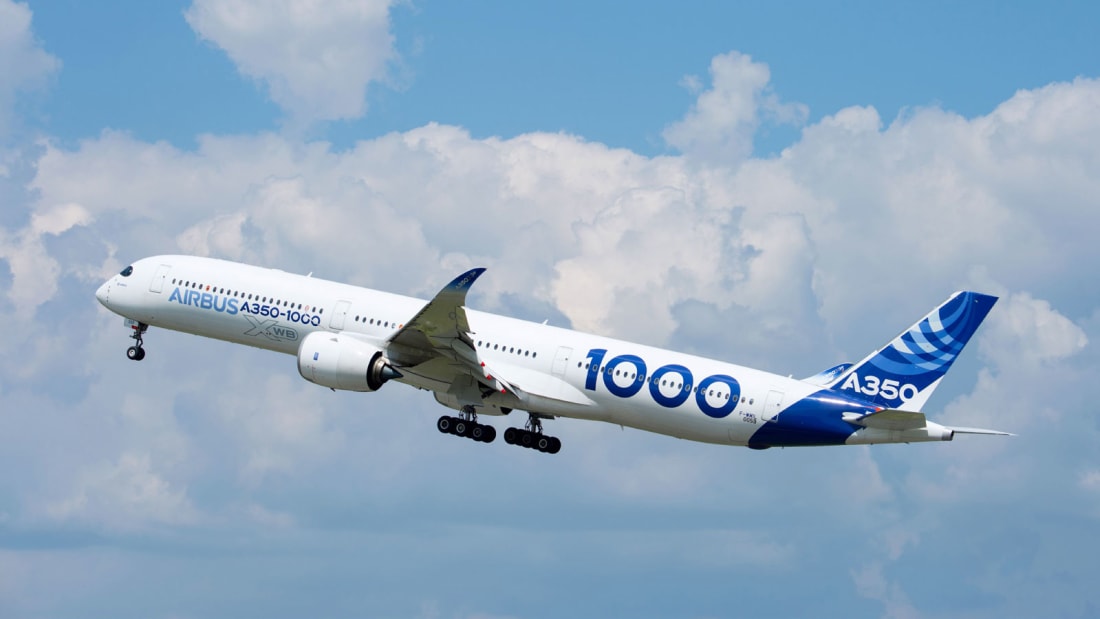
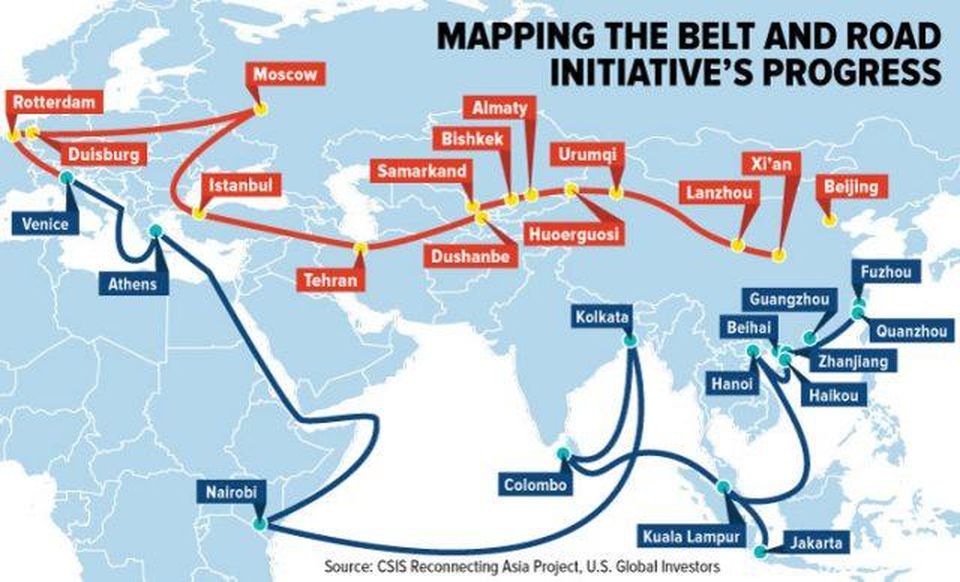
I personally believe that it is a very interesting Article that goes deeper than Tourism. Please read & be in the know.
China’s tourism route to massive global economic power and political influence. Great New Silk Roads trillions already committed
Just imagine that you’ve woken up on the first of October 2049 – the hundredth anniversary of the People’s Republic of China. How do you see the world?
Well, for a start, the world of tourism has dramatically changed. China has seen to that. By now the massive economic area free trade zone envisaged by the ‘Belt and Road’ scheme – has come into full operation as forecast. Extending all the way from inner China to the heart of Europe, Chinese high speed trains are bringing avid travellers to stay in Chinese branded hotels, to buy Chinese manufactured goods and souvenirs and to eat Chinese foods.
Today in 2020 China is number 1 in outbound tourism with around 200million international travellers a year. By 2049 at the present rate of growth the figure is likely to be more like 600 million even maybe a billion. All of these travellers will have billions to spend and you can be sure that China’s centrally-managed tourism will make sure that it is spent where China wants it to be spent.
The Chinese government calls the massive Belt and Road initiative “a bid to enhance regional connectivity and embrace a brighter future”. Cultural and economic initiatives are merged in tourism and the Silk Road tourism initiatives will certainly be geared to Chinese tastes. There have already been plans for major Las Vegas style casino cities and winter sports centres in and around Kazakhstan and there will certainly be more.
A new Chinese duty free zone in Kazakhstan
All along the central Silk Road, through China, Kazakhstan, Tajikistan, Uzbekistan all the way to Hungary and Europe, to the US via the North Silk Road and Africa via the south will be interconnected in economically-protected tax haven free trade zones. This is also likely to bring to the fore historic Silk Road Cities (of which there are hundreds) such as Samarkand, Kabul, Shiraz, Almaty, and many more. Add to these the destinations in South East Asia and this equals massive economic power.

Samarkhand
The initiative calls for the integration of the region into a cohesive economic area through building infrastructure, increasing cultural exchanges, and broadening trade. Apart from this zone, another area that is said to be included in the extension of this ‘belt’ is South Asia and Southeast Asia. Many of the countries that are part of this belt are also members of the China-led Asian Infrastructure Investment Bank (AIIB). North, central and south belts are proposed. The North belt would go through Central Asia, Russia to Europe. The Central belt goes through Central Asia, West Asia to the Persian Gulf and the Mediterranean. The South belt starts from China to Southeast Asia, South Asia, to the Indian Ocean through Pakistan. The Chinese One Belt strategy will integrate with Central Asia through Kazakhstan’s Nurly Zhol infrastructure program.
The Silk Road Land Corridors:

Chinese high speed trains await
The New Eurasian Land Bridge runs from Western China to Western Russia through Kazakhstan, and includes the Silk Road Railway through China’s Xinjiang Autonomous Region, Kazakhstan, Russia, Belarus, Poland and Germany.
The China-Mongolia-Russia Corridor will run from Northern China to the Russian Far East. The Russian government established the Russian Direct Investment Fund and China Investment Corporation, a Chinese government investment agency, partnered in 2012 to create the Sino-Russian Investment Fund, which concentrates on opportunities in bilateral integration.
The China-Central Asia-West Asia Corridor will run from Western China to Turkey.
The China-Indochina Peninsula Corridor will run from Southern China to Singapore.
The Bangladesh-China-India-Myanmar (BCIM) Economic Corridor, runs from southern China to Myanmar and is officially classified as “closely related to the Belt and Road Initiative”.
The China-Pakistan Economic Corridor (also known by the acronym CPEC), also classified as “closely related to the Belt and Road Initiative is a US$62 billion collection of infrastructure projects throughout Pakistan that aims to rapidly modernize Pakistan’s transportation networks, energy infrastructure, and economy. On November 13, 2016, CPEC became partly operational when Chinese cargo was transported overland to Gwadar Port for onward maritime shipment to Africa and West Asia.
Maritime Silk Road
The Maritime Silk Road, also known as the “21st Century Maritime Silk Road” is a complementary initiative aimed at investing and fostering collaboration in Southeast Asia, Oceania, and North Africa, through several contiguous bodies of water: South China Sea, the South Pacific Ocean, and the wider Indian Ocean area.
Like its sister initiative the Silk Road Economic Belt, most countries in this area have joined the China-led Asian Infrastructure Investment Bank.
Ice Silk Road
In addition to the Maritime Silk Road, Xi Jinping also urged the close cooperation between Russia and China to carry out the Northern Sea Route cooperation to realize an “Ice Silk Road” to foster development in the Arctic region. China COSCO Shipping Corp. has completed several trial trips on Arctic shipping routes, the Transport departments from both countries are constantly improving policies and laws related to development in the Arctic, and Chinese and Russian companies are seeking cooperation on oil and gas exploration in the area and to advance comprehensive collaboration on infrastructure construction, tourism and scientific expeditions.
East Africa
In May 2014, Premier Li Keqiang visited Kenya to sign a cooperation agreement with the Kenyan government. Under this agreement, the Mombasa-Nairobi Standard Gauge Railway was constructed connecting Mombasa to Nairobi. After completion, the railroad stretches approximately 300 miles (480 km) costing around $250 million USD.
In September 2015, China’s Sinomach signed a strategic, cooperative memorandum of understanding with General Electric. The memorandum of understanding set goals to build wind turbines, to promote clean energy programs and to increase the number of energy consumers in sub-Saharan Africa.
Hong Kong
During his 2016 policy address, Hong Kong chief executive CY Leung’s announced his intention of setting up a Maritime Authority aimed at strengthening Hong Kong’s maritime logistics in line with Beijing’s economic policy. Leung mentioned “One Belt, One Road” no fewer than 48 times during the policy address, but details were scant.
These are just a few of the hundreds of mega-million dollar initiatives. There will certainly be more.
China is already no1 world tourism source market, it is unlikely that this position will change for the foreseeable future particularly given the fact that it is forecast that up to 3billion Asian residents will become middle class by 2050.

The city of OZ was scheduled to have no less than 48 casinos in Kazakhstan
Already the power of Chinese tourism is having a major effect on the Silk Road countries, for instance around Lake Baikal in Siberia there is local agitation as Chinese people buy property; near Almaty in Kazakhstan a major tourism development is taking place to attract Chinese to gamble and relax, also in Kazakhstan a mass tourism ski development is taking place to attract Chinese skiers.
It is a short step to Chinese branded hotels, restaurants, shops and other Chinese-run businesses all along the Silk Road even to Germany and Italy. It is an even shorter step to China centrally-organised tourism taking place from China to the Mediterranean.
Furthermore, China will own land, railways, ports and duty free shopping centres all along their road. The fact is that they already do.
The benefit to China? Wielding economic and political power through outbound tourism.
Bournemouth University’s tourism school has been seeking to gather a wide range of knowledge and study. They say “While there has been considerable scholarly work on soft power and the Belt and Road initiative (BRI), the political and economic investment in Chinese outbound tourism deserves greater attention. Whereas the number of trips abroad taken by Chinese citizens was in the tens of thousands in the 1980s, the current figure is well over 130m per year. While it may remain a marginal phenomenon in demographic or trade terms, tourism is a crucial issue in contemporary China, a major object of governmentality and a means to push soft power initiatives to receptive countries. As China exercises soft power using outbound tourism (and arts and culture more broadly), the growth of Chinese tourism has on the surface benefited the economies of Southeast Asian countries, who were traditionally reliant on long-haul, seasonal travellers from the west.”
“Tourism has been used by the Chinese authorities to enforce the construction of borders and boundaries in the South China Sea, leading to rising tensions. Just as many countries have eased their visa requirements for Chinese tourists, China has increasingly sought to police ‘low-end’ tourists who might undermine the Chinese authorities as they attempt to boost their influence on the international stage. The authorities have sought to attract members of the overseas Chinese community to Chinese through Root-Seeking Tour Summer Camps, organized by the Overseas Chinese Affairs Office of the State Council, so as to teach the Chinese language and culture.”
“Questions have emerged about the linkages between tourism and politics, tourism and human rights, tourism and international migration patterns, and the impact of returning Chinese tourists on Chinese society.”
“These questions place the landscapes of Chinese tourists into a broader context. Chinese media increasingly highlight the growth of outbound tourism to particular counties, potential revenue and links to the Belt and Road Initiative.”
“While pitched as tourism projects, China has been accused of hiding its search for political, economic and military influence through tourism. As tourism projects embed infrastructure that supports the development of trade routes (global network of rail, roads, ports, pipelines, fibre-optic cables), does Chinese investment bring wealth, or will it be mainly kept within a closed loop of overseas Chinese communities and state linked businesses?”
“In Forest City, Johor Bahru (Malaysia), Chinese tourists are encouraged to buy Chinese-built apartments in a US$100 billion development mean to boast international schools, shopping malls, hotels and an immigration centre for approximately 700,000 Chinese residents.”
“The construction of the $1.4bn (£1.1bn) Port City project in Sri Lanka by the state-owned Chinese engineering firm China Communications Construction Company (CCCC) on 665 acres (2.6 sq km) of land is been marketed as a new Dubai, with luxury hotels, shopping malls and a marina.”
While China pledges that the New Silk Road will be open, transparent and environmentally friendly, many of these projects appear to lack transparency and accountability. There are concerns that the standard 99-year leases for these projects will lead to social, economic and environmental challenges, such as opaque funding, exorbitant claims of their tourism potential, corruption, and population displacement. Questions are emerging as the differences between these projects and the past/current ones dominated by the West.”
“While the New Silk Road spans 65 different countries, Chinese tourism, more broadly, holds the potential to redefine tourism, infrastructure, economies and even the governance of many more countries, as Beijing establishes its own norms, rules and institutions.
A full report on the New Silk Road, it’s challenges and opportunities will be in Sustainable Tourism 2020.
Independent, Incisive, Iconoclastic, the annual Sustainable Tourism Report has been published since 2003.
Link: https://www.travelmole.com/news_feature.php?news_id=2040651&c=setreg®ion=2&cat=7

Fancy shopping? There is more to the Capital of Luxury. Outlets, small shops and flea markets also coexist in the city of lights.
Coco Chanel’s Famous Quotes:
- Elegance is when the inside is as beautiful as the outside.
- Simplicity is the key note of all True Elegance.
- You can be gorgeous at thirty, charming at forty, and irresistible for the rest of your life.
- Adornment, what a science! Beauty, what a weapon! Modesty, what elegance!They Say:
“I could give up shopping but I am not a quitter.”
“Honestly, shopping beats therapy anytime. It costs the same and you get a dress out of it.”
“I’m not a shopaholic, I’m helping the economy.”
“Shortest horror story ever: Sold Out.”
“Cinderella is proof that a new pair of shoes can change your life.”
…and they are Right!
SHOPPING CENTERS
Top Range
- Les Galeries LaFayette
- Le Printemps Haussmann
- Le Bon Marche
- Beaugrenelle
- Le Carrousel du Louvre
Middle Range
- Forum des Halles
- Italie Deux
- Les 4 Temps & Le CNIT
- So Ouest
- Aeroville
Outlets near Paris
- La Vallee Village
- Usine center (Paris Nord II) (Avenue de la Plaine de France, 95500 Gonesse)
- One Nation Paris (1 rue du Président Kennedy, 78340 Les Clayes Sous Bois)
Best addresses to shop in Paris:
- Avenue des Champs Elysees
- Rue de Passy
- Rue St Honore
- Rue de Rennes
- Rue de Rivoli – Le Marais
- Boulevard Haussmann
- Boulevards Saint Michel & Saint Germain
- Avenue Montaigne
- Avenue des Ternes
- Quartier Beaubourg et les Halles
Shopping Tips
For bargain shoppers, you should know that Paris has two sales periods:
- Summer sales begin June 25th and ends July 29th.
- Winter sales start around 8 January each year. For a period of six weeks, all the shops in Paris offer many discounts to liquidate their stocks of the past season. (Discounts can sometimes reach – 70%).
- The main stores in Paris usually open from 10:00 till 19:00. They close on Sundays, except for the shops in Carrousel du Louvre, Avenue Champs-Elysées, Marais district or Sevres-Babylone.
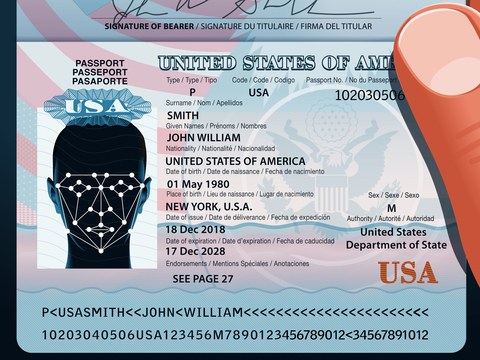
Since opening in October 2017, Singapore Changi International Airport’s Terminal 4 has stood apart from the rest of the award-winning airport’s terminals—not only because of its food emporium, Peranakan-inspired shophouse facades, and boulevard of 160 fig trees, but also because of its “self-service system,” where passengers can move through the check-in, bag drop, immigration, and boarding processes typically without interacting with a single human. At unmanned luggage booths, your photo is taken and digitally matched against your passport before you can drop your bag off. Your photo is snapped again at immigration, and with a match, the automatic security doors swing open and you’re free to go, all within seconds.
It’s an odd sensation, to walk through an airport with automated security systems, and have the creeping feeling that shouldn’t someone, somewhere be looking at your ID? But of course, that’s the point. Someone has been replaced by the system, and that system is capable of matching billions of faces within seconds. Changi may even use the system to locate late passengers, or identify those who are needed at boarding, but still lingering at duty-free.
Biometrics here, there, and everywhere
What’s happening in Singapore might sound futuristic, but airports in the U.S. aren’t far behind. By 2021, facial-recognition technology will be in use at the 20 busiest U.S. airports for “100 percent of all international passengers” entering and exiting the country, including U.S. citizens, thanks to an executive order signed in March 2017 by President Donald Trump. Currently, around 15 U.S. airports, including Atlanta, Chicago, and Seattle, are trialling U.S. Customs and Border Protection (CBP)’s biometric facial recognition program at boarding gates. Before boarding, passengers pause to get their photo snapped; that photo is instantaneously sent to the cloud-based, automated matching Traveler Verification Service and compared against the passport photo on record. (The CBP has claimed a 98 percent accuracy rate in its pilot program.) The agency retains photos of U.S. citizens for “up to 12 hours after capture” and images of non-U.S. citizens for up to 14 days for “evaluation of the technology,” according to a report from BuzzFeed. Proponents of the programs say the immediate purpose is twofold: to speed up boarding and customs processes and to advance the safety and security of air travel.
For more details, please click on the Link: https://www.cntraveler.com/story/how-airlines-and-airports-use-your-data-from-security-to-the-flight-itself?utm_source=nl&utm_brand=cnt&utm_mailing=CNT_Intel_101019&utm_campaign=aud-dev&utm_medium=email&bxid=5c33a939fc942d4c3f77fb6c&cndid=18935007&hasha=3ded14e32005820e43e42da5be4dbbc2&hashb=cee547c20045319ac985dd82fb9e52a4e7cac911&hashc=050540bcd5f4abba9a1358b183b529b8031a27035c8c80510984748b9ea806e7&esrc=TVL_MERGE_FEB2015&utm_term=CNT_Intel

